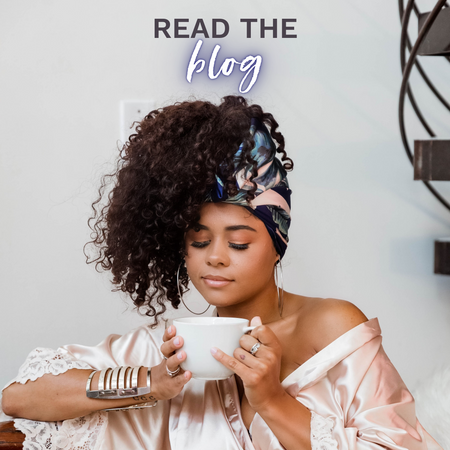Moisture is the foundation of healthy, thriving textured hair. Whether you have curly, coily, or kinky hair, keeping your strands properly hydrated is essential for length retention, curl definition, and overall hair health. However, with so many products on the market—butters, creams, oils, leave-in conditioners, and water-based moisturizers—it can be overwhelming to figure out what works best for your specific hair type.
In this comprehensive guide, we’ll break down how to effectively moisturize textured and highly textured hair, what ingredients to look for, how to know if your current routine is working, and how to adjust your regimen for optimal moisture retention. Whether you have Type 3 curls or Type 4 coils, this guide will help you build a moisture routine that keeps your hair soft, hydrated, and healthy.
Why Moisture Matters for Textured Hair
Textured and highly textured hair naturally tends to be drier than straight or wavy hair. The tight curl pattern prevents natural scalp oils (sebum) from traveling down the hair shaft, leading to dryness, brittleness, and potential breakage.
Proper moisture levels help:
- Prevent dryness and breakage
- Enhance curl definition
- Reduce frizz
- Promote length retention
- Improve overall hair manageability
However, not all hair types require the same level of moisture or the same products. Let’s break down what to use and how often based on your unique hair needs.
Understanding Your Hair’s Moisture Needs
Before you build a moisture routine, it's important to identify your hair’s porosity, density, and texture, as these factors determine how well your hair absorbs and retains moisture.
1. Hair Porosity: Does Your Hair Absorb or Repel Moisture?
Porosity refers to how easily your hair absorbs and retains moisture. There are three types:
-
Low Porosity Hair (Resistant to Moisture)
- Water beads on the surface of the hair instead of absorbing.
- Products sit on the hair rather than penetrating.
- Requires lightweight, water-based moisturizers and occasional heat to help absorption.
-
Normal/Medium Porosity Hair (Balanced)
- Absorbs moisture well and retains it for a reasonable amount of time.
- Can handle both lightweight and heavier creams or butters.
- Needs regular hydration but doesn't require excessive layering.
-
High Porosity Hair (Easily Absorbs But Struggles to Retain Moisture)
- Hair quickly soaks up moisture but dries out just as fast.
- Prone to frizz, tangling, and breakage.
- Requires heavier creams, oils, and butters to seal in hydration.
Do you know your hair porosity, if you don't, what are you waiting for?? A great first step is taking our easy Porosity Quiz
2. Hair Density: Do You Need Heavy or Light Products?
-
Low-density (fine) hair → Needs lightweight products to avoid buildup.
-
Medium-density hair → Can handle a mix of light and medium-weight moisturizers.
-
High-density (thick) hair → Benefits from thicker butters and creams for deep hydration.
3. Curl Type: Looser Curls vs. Tight Coils
-
Looser curls (Type 3A–3C): Need water-based leave-ins and creams for hydration.
-
Tight curls & coils (Type 4A–4C): Require layering moisture using the LCO or LOC method (explained below).
What Products to Use for Moisturizing Textured Hair
Not all moisturizing products are created equal! Here’s how to determine which to use:
1. Water & Water-Based Leave-Ins (Essential for Hydration)
-
Best for: All hair types.
-
How Often: Daily or every other day, depending on how dry your hair feels.
-
How to Know It's Working: Your hair feels hydrated but not weighed down.
Pro Tip: If your hair feels dry, always start with water or a water-based product before sealing with heavier moisturizers.
2. Creams & Leave-In Conditioners (For Hydration & Softness)
-
Best for: Medium to high porosity hair.
-
How Often: 2-4 times a week, depending on hair dryness.
-
How to Know It's Working: Hair feels soft, flexible, and easier to detangle.
Ingredients to Look For: Aloe vera, shea butter, glycerin, coconut milk, panthenol.
3. Butters (For Deep Moisture & Sealing)
-
Best for: High porosity and thick, coarse hair.
-
How Often: 1-2 times per week (too much can cause buildup).
-
How to Know It's Working: Hair feels nourished and maintains moisture for days.
Common Butters: Shea butter, mango butter, cocoa butter.
4. Oils (For Sealing in Moisture)
-
Best for: All hair types, but lighter oils are better for low porosity hair.
-
How Often: 2-3 times a week (avoid overuse to prevent buildup).
-
How to Know It's Working: Hair retains moisture longer without feeling greasy.
Lightweight Oils: Jojoba, grapeseed, sweet almond.
Heavy Oils: Castor, olive, coconut (best for high porosity hair).
How to Moisturize: The LOC vs. LCO Method
The order in which you apply products affects how well your hair retains moisture. Two popular layering techniques are:
1. The LOC Method (Liquid, Oil, Cream)
-
Step 1: Apply Liquid (water or a leave-in conditioner).
-
Step 2: Apply Oil to seal in moisture.
-
Step 3: Apply Cream for extra hydration and curl definition.
Best for: Low porosity hair, as oil helps lock in the moisture before applying a cream.
2. The LCO Method (Liquid, Cream, Oil)
-
Step 1: Apply Liquid (water-based product).
-
Step 2: Apply Cream for hydration.
-
Step 3: Apply Oil to seal everything in.
Best for: High porosity hair, as creams penetrate deeply before being locked in by oil.
Signs Your Moisture Routine is Working
- Hair feels soft and manageable.
- Curls and coils appear defined and not overly frizzy.
- Hair remains hydrated for multiple days.
- Less shedding and breakage.
Signs You Need to Adjust Your Routine
- Hair feels dry within hours → You may need a heavier cream or butter.
- Hair feels greasy or weighed down → Too much oil or product buildup.
- Hair is still breaking → You may need more hydration or a protein treatment.
How Often Should You Moisturize?
Daily: Light refreshers like water-based sprays.
2-4 Times a Week: Creams and oils, depending on hair dryness.
Weekly: Deep conditioning for maximum hydration.
Bi-Weekly: Protein treatments if hair feels weak or overly soft.
Moisturizing textured and highly textured hair is all about understanding your hair’s unique needs and using the right combination of water, creams, butters, and oils. Whether you follow the LOC or LCO method, or adjust your regimen seasonally, the key is listening to your hair and adapting as needed.
Key Takeaways:
- Start with water or a water-based product.
- Layer moisture using the LOC or LCO method.
- Adjust frequency based on porosity, density, and curl pattern.
- If your hair still feels dry, increase hydration and sealing.
- Avoid overusing heavy butters and oils if you have fine or low-porosity hair.
A well-moisturized head of curls or coils is stronger, healthier, and more resilient—so embrace the process and find the perfect routine for your unique strands!
What’s your go-to method for keeping your curls hydrated? Let us know in the comments!💜



0 comments